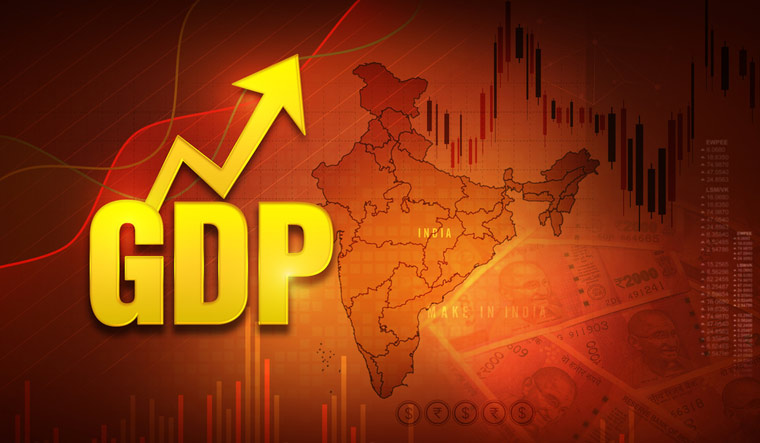India's economy is on a roll. Even as the world goes through a turbulence in the wake of high interest rates and geopolitical tensions, India's GDP accelerated 8.4 per cent in the October-December quarter, which was significantly better than analysts expectations.
As pointed by Soumya Kanti Ghosh, group chief economic adviser at State Bank of India, all sectors under manufacturing and services had a stellar show. The manufacturing sector expanded 11.6 per cent in the third quarter. Electricity, gas, water supply and other utility services grew 9 per cent and services also expanded 7 per cent.
Investments also have been robust at 10.6 per cent.
But, even as the headline growth has beaten all expectations, GVA (Gross Value Added), which is essentially GDP minus the tax collections, has grown only 6.5 per cent. This is slower than the 7.7 per cent growth in the second quarter of the financial year.
What's behind the near 2 per cent divergence between GDP and GVA numbers? Its the robust tax collections, point economists, who say that trend may not sustain.
"This wide gap followed from a surge in the growth of net indirect taxes to a six-quarter high of 32 per cent in this quarter, which is unlikely to be sustainable. In our view, it may be more appropriate to look at the trend in the GVA growth to understand the underlying momentum of economic activity," said Aditi Nayar, chief economist at credit ratings agency ICRA.
Madan Sabnavis, chief economist at Bank of Baroda too noted that the third quarter GDP had been "propped up" by the net tax effect.
"This would get corrected in Q4 to lead to more modest growth for full year," he said.
Sharp rise in gross fixed capital formation rate to 31.3 per cent from 30.7 per cent, was a big positive, said Sabnavis.
"This can be attributed more to government capex, roads, housing as there is less anecdotal evidence of private sector picking up sharply," he noted.
Nomura economists Sonal Varma and Aurodeep Nandi also stated that underlying growth is weaker than what the headline suggests.
"The GDP growth reading, while superlative, should not be interpreted as evidence of strong growth. The moderation in core GDP growth and in GVA growth suggests growth remains uneven," said the Nomura economists.
A strong public capital expenditure push has been driving the economic growth, but economists remain worried over subdued private consumption growth. Agri activity too has been tepid after an adverse monsoon season.
"Private final consumption expenditure growth inched up but remained tepid at 3.5 per cent in Q3 FY2024, with rural demand perceived to be cautious after an unfavourable monsoon and urban demand assessed to be uneven as well," pointed Nayar.
Hitesh Suvarna of JM Financial Institutional Securities noted that while consumption had improved sequentially, at 3.5 per cent, it was significantly lower than the 5.8 per cent average growth in the past four election years.
He expects the GDP to grow at 6.9 per cent in the 2024-25 financial year.
As per baseline projections of Nomura economists, GDP growth is likely to ease to 6 per cent in the January-March quarter from the 8.4 per cent in October-December. Further out, they expect GDP growth to remain resilient, but there are headwinds to consider.
"With general elections likely in April-May 2024, the imminent announcement of the code of conduct will most likely impact public capex momentum - which has been a key driver of headline growth. Private capex revival has been patchy and not broad-based," said Varma and Nandi.
They also remain concerned that "farming terms of trade remains at historically low levels, rural activity growth is yet to materially recover and formal sector employment indicators remain lacklustre."
Nomura has projected the economy to grow 6.1 per cent in calendar 2024 and at 6.2 per cent in financial year 2025.
While Indian economy may have performed well in the last quarter, there continues to be pockets of pain. noted Rajani Sinha, chief economist at Care Ratings.
"The sustainability of investment growth in the medium-term hinges significantly on the imperative need to strengthen consumption growth," said Sinha.
A broad-based improvement in consumption and private investment growth will be critical aspects to watch out for, she said.
"Overall robust GDP growth will be sustainable only when there is a meaningful improvement in consumption and private investment," pointed Sinha.
Care currently has a GDP growth forecast of 6.7 per cent for 2024-25.



